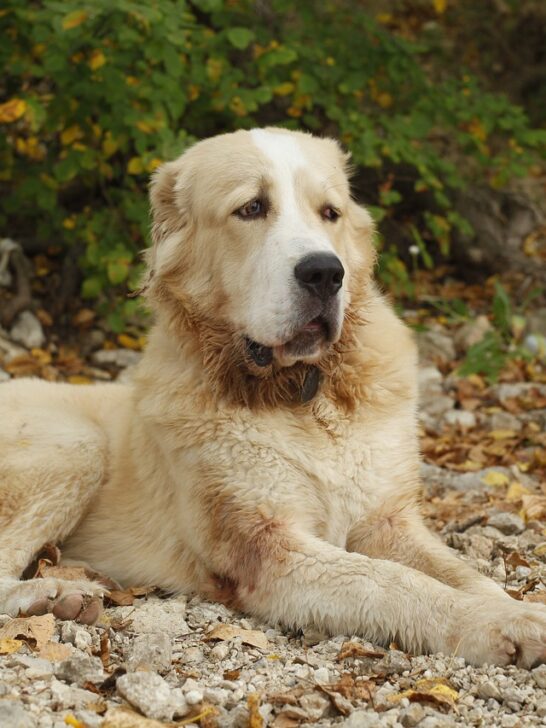Doberman German Shepherd Mix: This Hybrid Should Top Your List!
What is a Doberman German Shepherd Mix?
The Doberman German Shepherd mix, often called a “Doberman Shepherd,” is a crossbreed dog created by mating a purebred Doberman Pinscher with a purebred German Shepherd. This mix brings together two strong and smart working breeds, both well-known for their protective instincts. With this dog, you get a combination of some of the best-and sometimes challenging-qualities from both parents.
These dogs are large, strong, and full of energy. Their looks and personalities can vary depending on which genes are stronger, so each Doberman German Shepherd mix can look and act a bit different. But you can expect them to always be loyal, intelligent, and naturally protective. This makes them great watchdogs and loyal companions for owners who understand their needs.
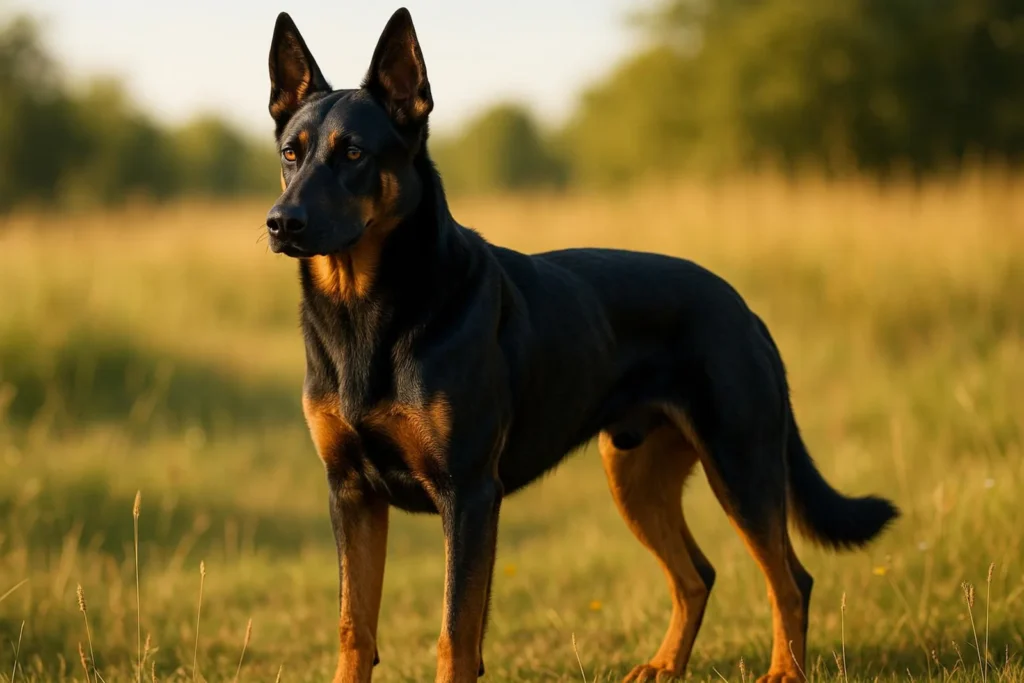
Recognition and Naming
This mix isn’t recognized as a purebred by big kennel clubs like the American Kennel Club (AKC), but it is listed with hybrid registries such as the Dog Registry of America, Inc. (DRA). This shows they are becoming more popular as a “designer dog.” You might also hear these dogs called Doberman Shepherd, German Shepherd Doberman mix, or Dober-Shep.
Unlike purebred dogs, mixed breeds do not have a set standard for appearance or behavior. This means puppies from the same litter can look and act quite differently. Breeders might try to get a good balance of qualities from both parents, but the results can vary each time.
History of the Doberman German Shepherd Mix
The Doberman German Shepherd mix does not have a long or well-known history. It came about because people started mixing different breeds on purpose (sometimes called “designer dogs”) to get certain features or possibly reduce certain health problems. The exact time this mix first appeared is unknown, but they’ve become more sought after in the last few decades.
The Doberman Pinscher started out in Germany around 1890 as a guard dog, bred by Karl Friedrich Louis Dobermann. The German Shepherd also comes from Germany, created in the late 1800s by Captain Max von Stephanitz as a smart and hard-working dog. Both breeds served in jobs like police and military work, bringing these skills and instincts to their mixed puppies.
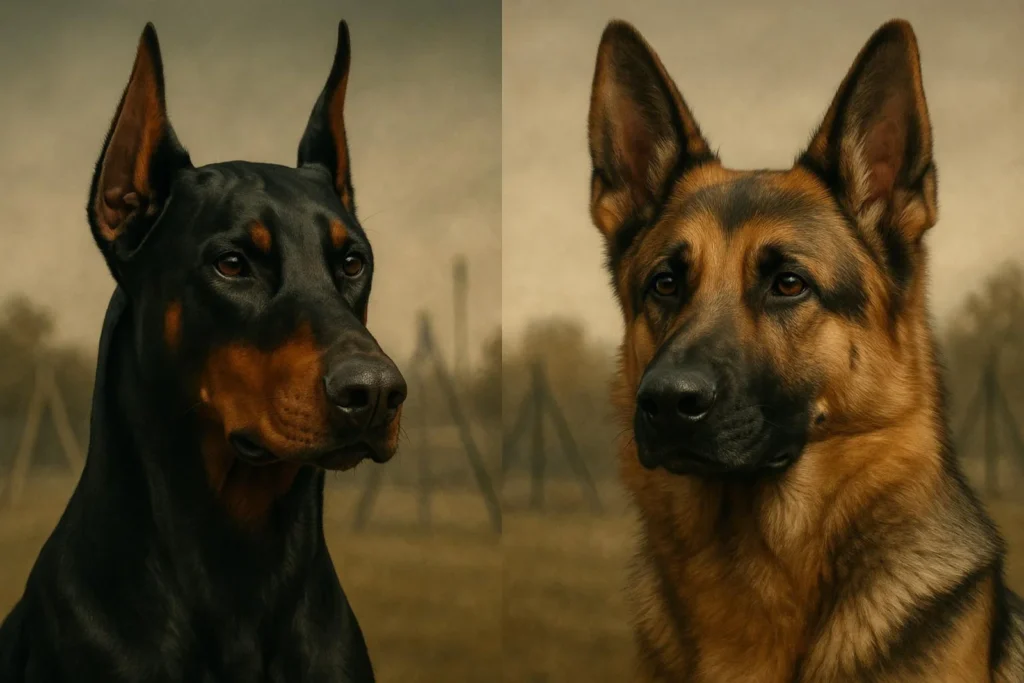
Physical Appearance
Size and Body Shape
This mix is a big dog that gets its muscle and size from both parents. It usually stands 22 to 26 inches tall at the shoulder and weighs 90 to 110 pounds. Most are lean and athletic like a Doberman, but some can be bulkier like a German Shepherd. Either way, they are built for action, so they need room to move.
| Characteristic | Range |
|---|---|
| Height | 22-26 inches |
| Weight | 90-110 pounds |
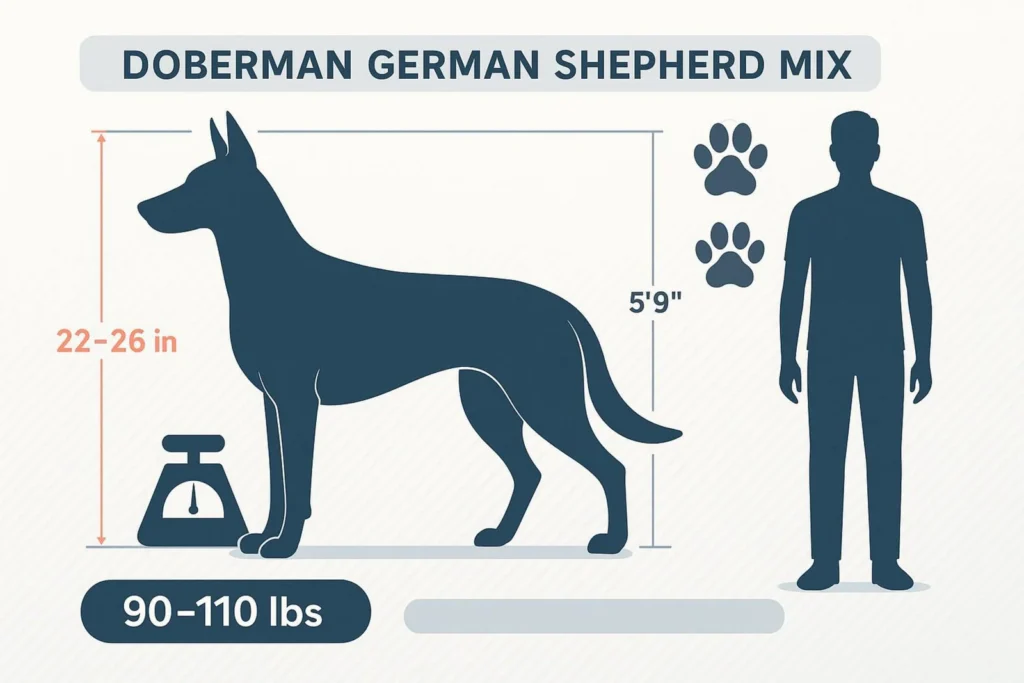
Coat Colors and Texture
This mix usually has a short, shiny coat that’s easy to take care of. Shedding is low to moderate, so they are easier to groom than some other large breeds. Common coat colors are black, dark brown, and different shades of tan. Markings often look like those of a Doberman, with tan spots on the muzzle, chest, and legs. Some dogs may have a longer or thicker coat like a German Shepherd, but many look more like a Doberman.
Face and Ears
These dogs have long muzzles and sharp eyes, combining the Doberman’s sleek head with the intelligent look of a German Shepherd. Most have brown eyes that show their alertness.
Their ears can vary. Some have pointed ears like a German Shepherd, while others have floppy ears like an uncropped Doberman. Some owners choose to crop their dog’s ears for a Doberman look, but many keep them natural. Examples include dogs with very upright ears like “Roxy” or more jackal-like ears like “Cairo.”
Temperament and Smarts
Personality
The Doberman German Shepherd mix is loyal, smart, and full of energy. They are bold, brave, and have a strong mind of their own. They bond closely with their humans and like being involved with family activities.
Without enough training and things to do, this mix can get bored or stubborn. They do best when they have a job or regular guidance.
Protection Instincts
This dog is a natural protector thanks to both its parents. They are alert and watchful, always on guard for potential threats. Their strong presence and sometimes cropped ears make them look tough, and they are usually very wary of strangers. Owners should train them early so they know when to protect and when to relax.
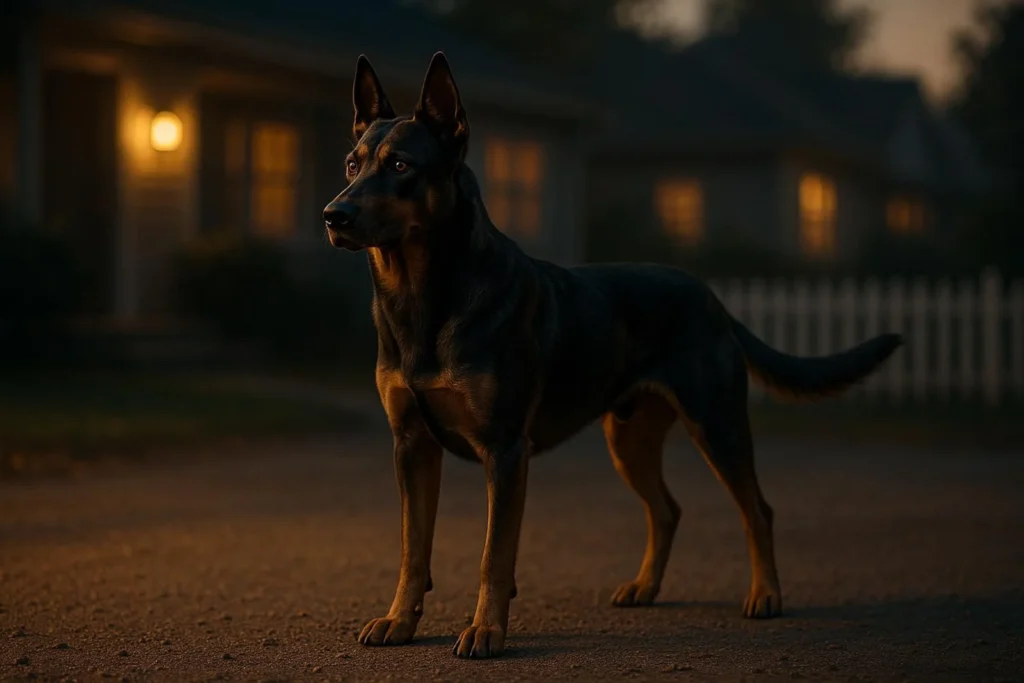
Family Suitability
With early and steady socializing, these dogs can be loving family members. They care deeply for their people and will boldly protect them. However, because of their energy and willpower, they are best for families or owners who have experience with big, active dogs. They are not a good pick for first-time dog owners who might not be ready for the level of training needed.
With Children and Other Pets
Early socializing is very important. This mix can be gentle with children, especially if raised with them, but because of their size and energy, they might knock over small kids during play. Most experts think they fit better with families that have older children. They can get along with other dogs and even cats if they grow up with them, but introductions should be done carefully.
Should You Choose a Doberman German Shepherd Mix?
Why Get One?
- Exceptional intelligence: Learns quickly and loves challenges.
- Loyal and protective: Great watchdogs and devoted family members.
- Very active: Good for people or families who enjoy being outdoors and want a dog to join them for runs or hikes.
What Makes This Mix Challenging?
- Needs clear leadership: Works best with experienced owners.
- Lots of energy to burn: Needs plenty of daily exercise, which can be hard to keep up for some people.
- Not good at being alone: May get anxious and destructive if left without company for too long.
- Doesn’t handle cold well: Needs to live mostly indoors if winter temperatures are low.
How to Care for a Doberman German Shepherd Mix
Exercise Requirements
This mix comes from parents who are known for working and being active, so it needs at least 90 to 120 minutes of exercise each day, spread out over a couple of sessions. Activities they enjoy include:
- Long walks or jogs
- Hiking
- Playing fetch or dog sports like flyball
- Obedience or scent games
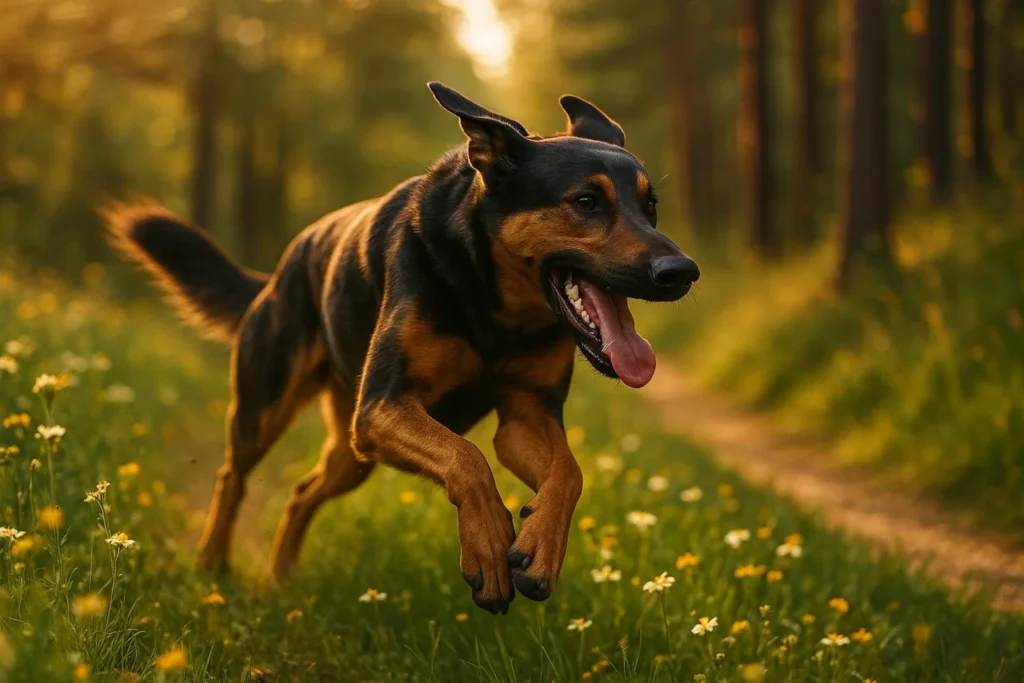
They also need mental stimulation, so puzzle toys or new training challenges keep their minds busy.
Training Advice
Start training early, and be patient but clear with rules. Use positive rewards such as treats or play when they do something right. Avoid harsh corrections-these can make the dog fearful or aggressive. Because they are smart, they learn fast, but they can also be stubborn, so regular, firm, and positive training is best.
Socializing Needs
Making sure this mix meets lots of different people and experiences new places early on helps prevent aggressive or fearful behavior. Puppy classes are a good start, followed by regular outings. This helps them become friendly, confident dogs who can tell real danger from everyday events.
Feeding and Nutrition
Diet Needs
These big, active dogs need a protein-rich diet to support their muscles and activity level. Feed them 4-5 cups of good quality dry dog food per day, split into two meals. Avoid overfeeding, as extra weight can harm their joints. It helps to talk with a vet to create a meal plan based on your dog’s activity, age, and possible health risks.
| Life Stage | Feeding Tip |
|---|---|
| Puppy | Puppy food for large breeds, feed several small meals per day |
| Adult | 2 meals per day, possibly more if highly active |
| Senior | Adjust to fewer calories, but keep nutrients up |
Recommended Foods
- Choose brands with meat as the first ingredient (like chicken or beef).
- Examples: Wysong Epigen, Instinct Ultimate Protein, Evo, Blue Buffalo Life Protection Formula.
- For puppies: look for formulas that include calcium for healthy bones.
- Avoid food with fillers, artificial flavors, or preservatives.
Always have fresh water available.
Grooming and Care
Shedding and Brushing
This mix tends to shed a little to a moderate amount. Brush them three to four times a week using a slicker brush or rubber curry comb to remove extra hair and keep their coat shiny. Brushing also helps you spot skin problems early.
Bathing and Skin Care
Bathe your dog only when dirty, using mild dog shampoo like Earthbath All Natural or Healthy Breeds Oatmeal & Aloe. To make bath time less stressful, start getting them used to it as a puppy. In between baths, you can use a dry dog shampoo for quick clean-ups.
Nails, Ears, and Teeth
- Nails: Trim regularly to avoid pain and prevent foot problems.
- Ears: Clean weekly with a gentle, dog-safe solution-especially if the ears are floppy and can trap moisture.
- Teeth: Brush several times each week to avoid dental disease. Start this when they are young.
Health and Life Expectancy
Health Risks
Even though mixed-breed dogs are sometimes healthier, this mix can still get health problems from their parents. Some common ones are:
- Heart problems (like dilated cardiomyopathy)
- Wobbler syndrome (spinal issues)
- Hip and elbow dysplasia
- Megaesophagus (enlarged food tube)
- Degenerative myelopathy (nerve disease)
They can also get separation anxiety-if left alone too much, they may act out destructively.
Average Life Span
With good care, a Doberman German Shepherd mix lives about 10 to 13 years. Things like good food, regular exercise, and prompt vet care all help them live longer and healthier lives.
Prevention and Vet Visits
Seeing a vet regularly for vaccines and health checks is key. If your dog’s parents had health tests for joint or heart problems, this lowers the risk for the puppies. Think about pet insurance to help cover sudden medical costs, which can be expensive for big dogs. Keeping up with exercise and healthy food supports a longer, healthier life.
Doberman German Shepherd Mix Puppies: What to Know
How to Pick a Good Breeder
- Look for breeders who openly share health info about both parent dogs.
- You should be able to visit and see the puppies’ living space.
- Breeders should test for hip, elbow, heart, and eye problems.
- Stay away from breeders who rush sales or avoid your questions.
- Expect to spend about $450-$500 for a puppy, with total costs over $1,500 after supplies and vet visits.
What to Expect with Puppies
Doberman German Shepherd puppies grow fast and are very smart and active. They may take on more traits from one parent than the other. Start crate and potty training right away. They go through a chewing phase, so provide safe chew toys to protect your belongings.
Rescue and Adoption
- Shelters and breed-specific rescues sometimes have this mix available.
- Adoption costs less than buying from breeders and gives a dog a new home.
- Organizations like Dobies and Little Paws Rescue or German Shepherd Rescue are good places to check.
- Adopting older dogs lets you know more about their temperament and health.
Frequently Asked Questions
Is a Doberman German Shepherd Mix Good for First-Time Owners?
Usually not. These dogs are strong, smart, and need steady, clear guidance and lots of exercise and socializing. Without experience, it can be hard to handle their energy and dominant personality. They do best with someone who knows how to train and lead big, smart dogs.
Should I Get a Male or Female?
The difference between males and females is minor-males are sometimes a bit bigger and may mature more slowly. Both can be good pets, but personality depends more on training and upbringing. Getting your dog spayed or neutered usually removes most male/female behavior differences. Choose based on the temperament that matches your lifestyle rather than gender.
Are There Similar Mixes?
- Rottweiler German Shepherd mix (Rottie Shepherd): Similar guarding instincts, but usually more laid back.
- Belgian Malinois German Shepherd mix: Also energetic, loyal, and protective.
- Akita German Shepherd mix: Large and strong, with protective instincts.
- German Shepherd Husky (Shepsky): Good for active owners but sheds more.
Any mix with a working breed needs plenty of activity, training, and socialization. Research both parent breeds to know what to expect.


















